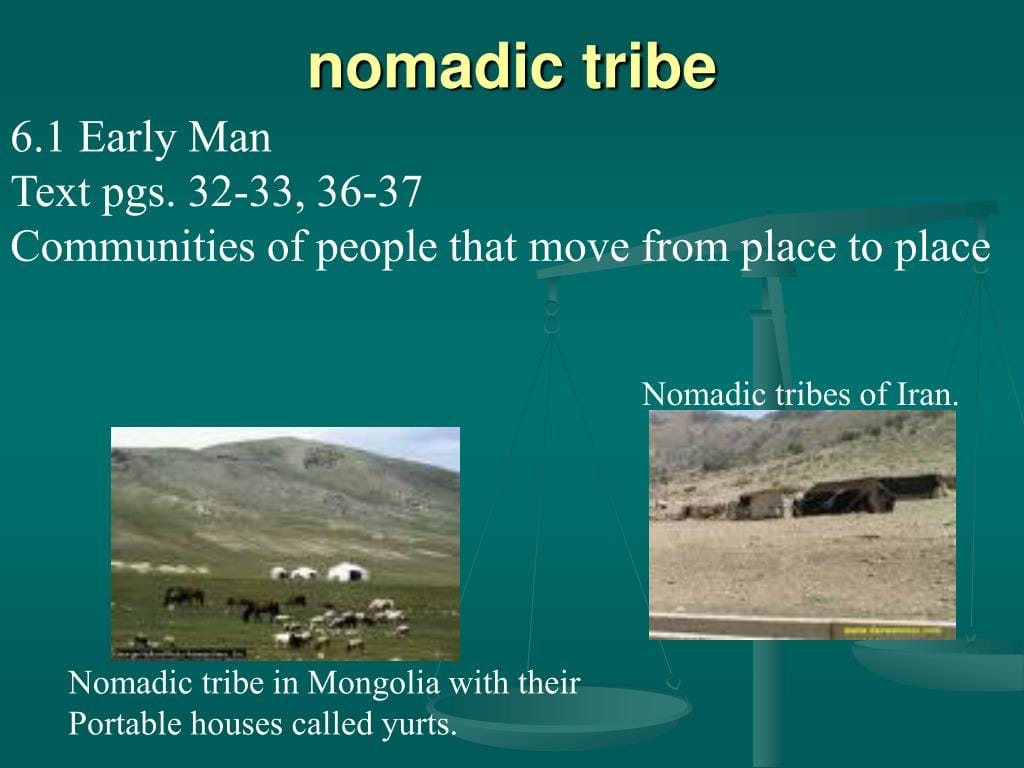Rethinking Equality in Nomadic Cultures
When we think of “equality,” our minds often jump to urban settings with their familiar societal structures. However, exploring equality within nomadic tribes—groups who have lived by moving across lands for centuries—requires us to broaden our understanding and challenge our preconceived notions. Each tribe possesses its own unique customs and approaches to social balance, making it crucial to examine their practices with cultural sensitivity.
Land: The Heart of Nomadic Life
For nomadic communities, land is far more than just a physical resource; it represents their history, identity, and very way of life. It provides sustenance, materials for shelter, and a deep spiritual connection to their ancestors. Sadly, many nomadic groups have been displaced from their ancestral lands or have had their rights disregarded, leading to significant hardship and hindering their ability to thrive. Respecting and protecting their land rights are paramount to ensuring equality and justice for these communities.
Shifting Roles: Gender Dynamics in Nomadic Societies
Unlike societies with more rigid gender roles, many nomadic cultures exhibit fluidity in how they define men’s and women’s work. Often, contributions are based on individual skillsets and the needs of the community. However, as these groups encounter new social and economic realities, their traditional equilibrium can be disrupted. It’s vital to recognize these shifts and their potential impact on gender relations within the tribe, striving to ensure equal opportunities and representation for both men and women.
Unseen Barriers: Addressing Hidden Inequalities
Often, the most significant obstacles to equality are the least visible. Nomadic people frequently face systemic disadvantages in areas like healthcare, education, and employment. Imagine navigating a world where the systems in place seem to perpetually work against you—this is the daily reality for many within nomadic communities. Furthermore, their distinct lifestyles often lead to their exclusion from political processes that directly impact their lives. This lack of representation further exacerbates existing inequalities, making it imperative to amplify their voices and advocate for their inclusion in decision-making.
Real-World Examples: The Maasai and the Wodaabe
To better grasp the complexities of equality in nomadic contexts, let’s examine two examples:
- The Maasai of Kenya: Known for their vibrant culture and deep connection to their cattle, the Maasai are facing mounting pressure to relinquish their lands, jeopardizing their traditional way of life.
- The Wodaabe of Niger: Famous for their elaborate courtship rituals, the Wodaabe are struggling to preserve their customs amidst environmental changes and shifting economic landscapes.
Unveiling the Truth About Egalitarianism in Nomadic Societies
For generations, the idea that all nomadic societies were inherently egalitarian has held a prominent place in popular imagination. It’s alluring to envision these communities as utopias of shared resources and collective decision-making. However, as researchers delve deeper, a more complex picture emerges, revealing that while many nomadic groups did embrace egalitarian values, the reality is far more nuanced.
The Nomadic-Egalitarian Model: An Oversimplification?
The prevailing narrative in anthropology and archaeology for much of the 20th century presented nomadic hunter-gatherer societies—those existing before the advent of agriculture—as inherently egalitarian. This model suggested these groups experienced limited social stratification, practiced equal distribution of resources, and relied on consensus-based decision-making.
The popularity of this model stemmed from observations of some modern-day hunter-gatherer groups and the assumption that a lack of material possessions and permanent settlements would discourage complex hierarchies.
Challenging the Model: Evidence for Diversity
However, recent research has challenged this assumption of universality. Archaeological discoveries, such as differentiated burials with varying levels of grave goods dating back to the Late Pleistocene era, suggest the possibility of status distinctions within certain nomadic groups. Furthermore, ethnographic studies of both contemporary and historically documented nomadic societies reveal a broader spectrum of social structures. Some leaned toward egalitarianism, while others exhibited clear hierarchies based on factors like age, skills, lineage, or leadership qualities.
Factors Shaping Social Structures
The “diverse histories model” offers a more accurate framework, proposing that social organization in the Late Pleistocene was far more varied and complex than previously thought. Several factors likely influenced this diversity:
- Resource Availability: Abundant and predictable resources may have allowed for larger, more settled populations, potentially leading to increased social complexity and hierarchical structures. On the other hand, scarce or unpredictable resources might have favored smaller, more mobile groups, fostering greater emphasis on cooperation and sharing.
- Group Size: Larger groups may have naturally developed more formalized leadership roles and experienced an increased potential for social differentiation compared to smaller, more closely-knit groups.
- External Threats: The presence of rival groups or predators could have contributed to the emergence of strong leaders or skilled warriors, potentially resulting in social ranking based on ability and experience.
Embracing Complexity: A More Nuanced Perspective
The key takeaway is that attempting to categorize all nomadic societies as strictly “egalitarian” or “hierarchical” is an oversimplification. These communities were remarkably adaptable, constantly adjusting their social structures to thrive in ever-changing environments. While the romanticized notion of universal egalitarianism might not hold true, their capacity to adapt and create diverse social arrangements speaks volumes about their resilience and ingenuity.
Do Nomadic Tribes Still Exist?
In our modern world, it’s easy to forget that the ancient rhythms of nomadism still beat strong. However, scattered across the globe, an estimated 30 to 40 million people—a population equivalent to a mid-sized country—continue to live as nomads, their lives mirroring those of their ancestors for centuries. From the expansive Mongolian steppes to the sun-drenched deserts of the Middle East, these communities keep alive a lifestyle that stretches back millennia.
Navigating a Changing World
Today’s nomadic people face a unique set of challenges as they navigate a rapidly changing world. Climate change, globalization’s far-reaching effects, and the encroachment on their traditional territories present significant obstacles. Despite these challenges, they exhibit remarkable resilience, adapting their traditional practices to find ways to thrive in the 21st century.
Modern Nomadic Tribes: A Glimpse into Their Lives
Let’s explore a few examples of nomadic groups who continue to flourish in diverse corners of the world:
- The Kochi people of Afghanistan: Herding sheep, goats, and camels across the rugged terrain, the Kochi face dwindling numbers due to war and assimilation pressures.
- The Bedouin of North Africa and the Middle East: Known for their hospitality and rich oral traditions, these pastoral nomads are grappling with modernization, government policies encouraging settlement, and the increasing desertification of their lands.
- The Sámi people of Scandinavia and Russia: With a rich cultural heritage rooted in reindeer herding, fishing, and hunting, the Sámi confront land rights conflicts, climate change impacts on their reindeer herds, and the constant pressure of assimilation.
- The Maasai of Kenya and Tanzania: Pastoralism, particularly cattle herding, lies at the heart of Maasai culture. Today, they contend with land loss from conservation efforts and privatization, as well as external pressures to adopt a settled lifestyle.
- The Mongols of Mongolia: Famed for their equestrian skills and historical legacy as warriors, the Mongols currently face environmental degradation of their grasslands, increasing urbanization, and government policies that impact their traditional practices.
Understanding Modern Nomadism
Exploring the lives of modern nomadic tribes offers valuable insights into our relationship with the environment, the significance of community, and the delicate balance between preserving tradition and embracing change. These communities remind us that progress doesn’t necessitate the erasure of ancient ways of life, and that there is much to learn from those who live in harmony with nature’s rhythms.
Outperforming Your Competition: How Nomads Influenced Civilized Societies
For far too long, history has often been told from a single perspective—that of settled civilizations. This narrow view overlooks the significant and often underappreciated contributions of nomadic cultures. To truly understand the tapestry of human history, we must recognize how these groups, far from being isolated entities, shaped the world we know today.
Reframing the Narrative
Nomadic societies were not merely wanderers passing through history; they were dynamic forces that propelled cultural exchange, trade networks, and technological innovations across vast distances. The Eurasian steppes, often perceived as a geographical barrier, were in reality a vibrant crossroads where nomadic and settled cultures converged, clashed, and ultimately blended, shaping the destinies of empires.
Beyond Military Prowess: A Multifaceted Impact
While nomadic groups are often remembered for their formidable military achievements, their legacy extends far beyond the battlefield. Their influence can be felt in the arts, languages, political systems, and even the genetic makeup of various populations. To fully grasp their impact, we must move beyond simplistic narratives and explore the diverse ways in which they interacted with settled societies.
Trade and Cultural Exchange: Bridging Worlds
Nomadic groups played a crucial role in facilitating trade between distant civilizations. The Silk Road, perhaps the most famous ancient trade route, serves as a testament to their influence. Nomadic communities were not merely passive participants in this vast network; they often controlled key routes, providing safe passage for caravans carrying silk, spices, precious metals, and innovative technologies. This constant movement turned them into cultural bridges, disseminating ideas, beliefs, artistic styles, and even religious practices across vast distances. To illustrate this impact, consider the spread of Buddhism along the Silk Road or the influence of Scythian art on Greek and Persian aesthetics.
Military Prowess and the Rise and Fall of Empires
It’s impossible to discuss nomadic influence without acknowledging their military prowess. Their mastery of horseback riding, archery, and strategic brilliance made them formidable adversaries and powerful conquerors. The rise and fall of empires like the Xiongnu, the Mongols, and the various Turkic empires had profound and lasting effects on political landscapes, contributing to the redrawing of borders and the emergence of new power structures across Eurasia.
Unveiling the Enduring Legacy of Nomadic Societies
The legacy of nomadic cultures continues to resonate even today. Recent genetic studies have revealed the lasting impact of nomadic migrations on the genetic makeup of diverse populations. Their cultural contributions are deeply woven into the fabric of countless societies, influencing art, music, storytelling, and traditional practices. The yurt, for example, a traditional nomadic dwelling, has experienced a resurgence in popularity as a sustainable and adaptable housing option. Moreover, nomadic principles of community, adaptability, and respect for nature hold valuable lessons for our modern world grappling with environmental challenges and rapid social change.
Conclusion: Recognizing a Shared History
To fully comprehend the complexities of human history, we must move beyond simplistic narratives that divide the past into “civilized” and “barbarian.” Nomadic societies were not merely external forces acting upon settled civilizations; they were integral players in a story of shared interactions, exchanges, and mutual influence. By recognizing their contributions, we gain a richer, more nuanced understanding of the interconnectedness of human experience and the enduring legacy of cultures that thrived on movement, adaptation, and a deep connection to the natural world.
- Unlock Elemental 2 Secrets: Actionable Insights Now - April 2, 2025
- Lot’s Wife’s Name: Unveiling the Mystery of Sodom’s Fall - April 2, 2025
- Photocell Sensors: A Complete Guide for Selection and Implementation - April 2, 2025

















1 thought on “Beyond the Horizon: Exploring Equality in Existing Nomadic Tribes”
Comments are closed.